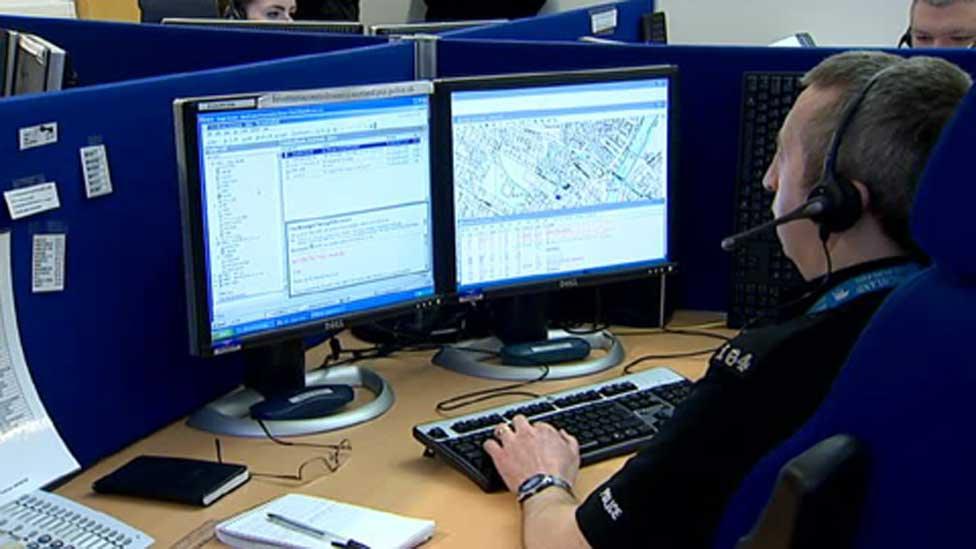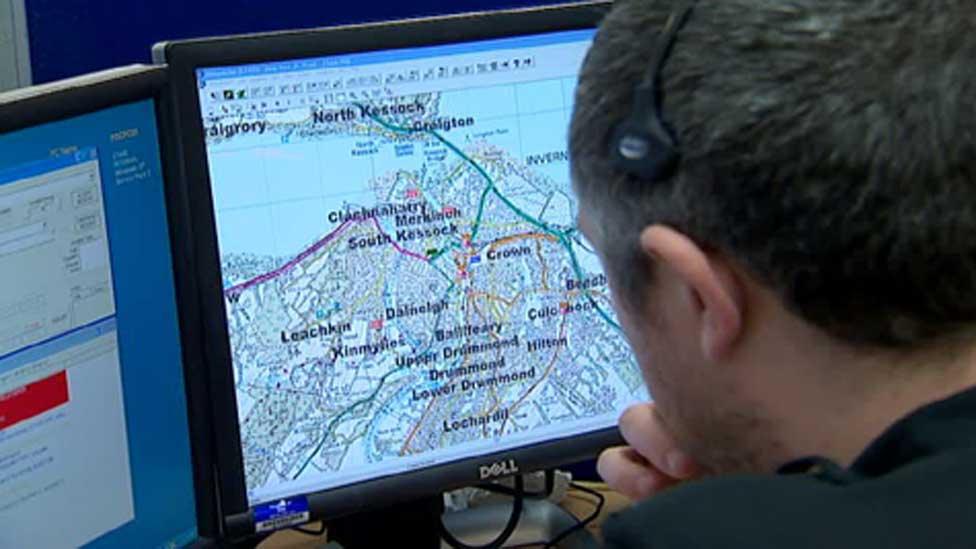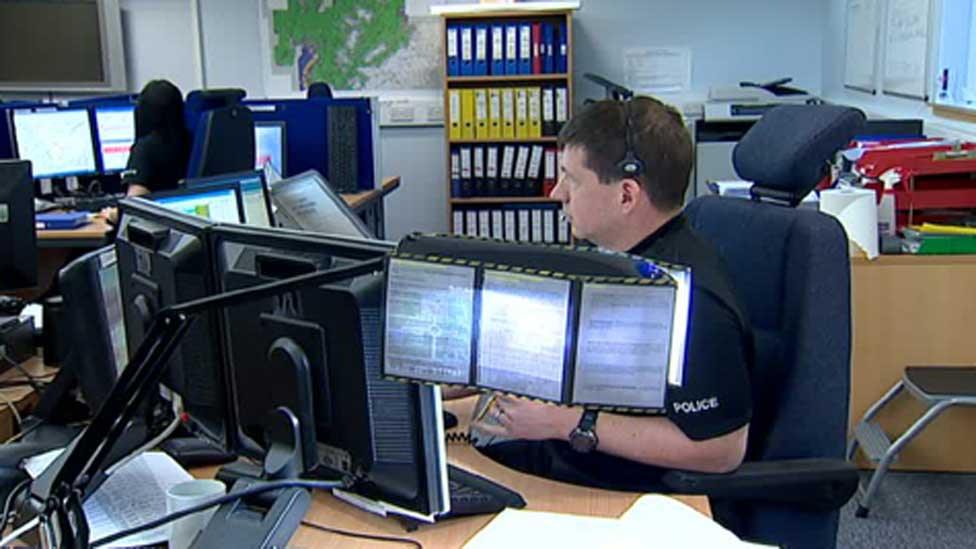Ten things we learned about police call-handling
- Published

HM Inspector of Constabulary, Derek Penman, has delivered a report into police call-handling, external in the wake of the failure to respond to the M9 crash in which two people died.
Mr Penman's report looks at reforms to control rooms after the police service after it was merged into a single force in April 2013.
Beyond the headlines it provides some interesting information about calls to the police.

1. 999 calls and non-emergency calls

Almost 30% of 999 calls made to Police Scotland were an "inappropriate use" of the emergency service, the report says.
Police Scotland received 500,306 calls via the 999 service in 2014-15. That's an average of 1,370 per day.
The 101 non-emergency system registered 3,168,181 calls in 2014-15, a reduction of 4.6% on the previous year.


2. Abandoned calls
In 2013-14, 4.2% of 101 calls were discontinued before a service advisor could answer. The figure for 2014-15 has not been determined but is believed to be 3.4%.

3. Level of service
The 999 grade of service fell in 2014-15, with a reduction of 3.8% in both the East and West and 0.2% in the North.
The figures for 101 grade of service show it fell 9.1% in the West. There was a slight improvement by 0.2% in the North. Police Scotland has been unable to provide data for the East in 2014-15.
Performance in the North is a combined figure for Dundee, Aberdeen and Inverness. It varies across the three sites. The six months between April and September 2015, saw 70% in Dundee, 85% in Aberdeen and 90% in Inverness.

4. Time to answer
The time taken to answer a call is calculated from the point where it is physically possible to answer the call.
For 101 calls this is not possible until after they have completed the touch-tone options (Press 2 for Custody Enquiry, 3 for Lost Property etc).
The length of this process has been measured at no more than 35-40 seconds. Calls also spend a minimum of 25 seconds routing through the 101 system before they are presented to the service centres.

5. Failure demand
The first recommendation of the report is to eliminate "failure demand".
This relates to calls which are not relevant, avoidable or generated through a previous failure to meet customer need.
This can include misuse of 999, additional demand on the 101 service caused by repeat callers, people calling back because of a lack of response and use of 101 by partner agencies or other police departments.

6. Benchmarking
Police Scotland deal with a below average number of calls per head of population than large forces in England and Wales, primarily due to population density and geographical variances.
Police Scotland is operating on a cost per call average well below the average in other large forces elsewhere.
The number of calls dealt with per staff member in the North is very high, reflecting their resource shortages
Service advisors in the East have a relatively high workload and they do not perform as well as in other areas or forces

7. Scribble pads
The inspector of constabulary observed service advisors across all sites using paper "scribble pads" alongside their computer systems.
Police Scotland encourages service advisors to record information from callers directly on to the computer system but permits the use of "scribble pads" because they frequently need to quickly write down critical information from a caller, who may not always be coherent or structured in providing information.
Staff in the East said they often used writing pads when ICT systems were slow.
HMICS said Police Scotland should review the use of ad hoc 'scribble pads' by service advisors.

8. Google maps
The control rooms have a "gazetteer" which is a 'look up' facility to search and verify addresses.
It has all known addresses in Scotland with unique reference numbers.
Issues with the gazetteer were identified during system and user testing in late 2014 but were not deemed to be severe enough to prevent implementation of the new systems.
Staff in both East and West complained about the quality of the information within the gazetteer, noting particular concern when taking overflow calls from the North area.
Some staff we spoke to were resorting to the use of 'Google Maps' to identify locations, with associated delays in completing calls.
This issue has since been rectified by a system upgrade.

9. Staff costs
The report says that while Police Scotland has achieved savings of more than £1.8m per annum in staff costs, it has increased police officer and overtime costs by £1.3m.

10. Bilston Glen problems
The report says there were insufficient staff available in Bilston Glen, the East area control centre, when work transferred from Stirling and Glenrothes in early 2015, resulting in low levels of performance.
HMICS notes that the issues with 999 delays were most acute within Bilston Glen between January and April 2015, which coincided with the time that Stirling and Glenrothes service centres were closed.
It says other performance issues within Bilston Glen were largely attributed to insufficient staff numbers and ICT performance.
The report says the release of unforeseen levels of staff through Voluntary Redundancy or Early Retirement meant there were insufficient resources available in Bilston Glen when the work transferred.
It says those responsible at that time were aware that the number of staff was insufficient to cope with call demand and put a number of measures in place to mitigate against these issues.
There was "limited use" of police officers in service centres to provide cover.
HMICS says it has not reviewed the use of these officers nor their training and experience because that falls within the scope of the Pirc inquiry into the tragic incident involving the deaths of John Yuill and Lamara Bell.
The inspectorate says that while there were significant issues with poor call handling performance in the East in early 2015, performance has since improved considerably.
- Published10 November 2015
